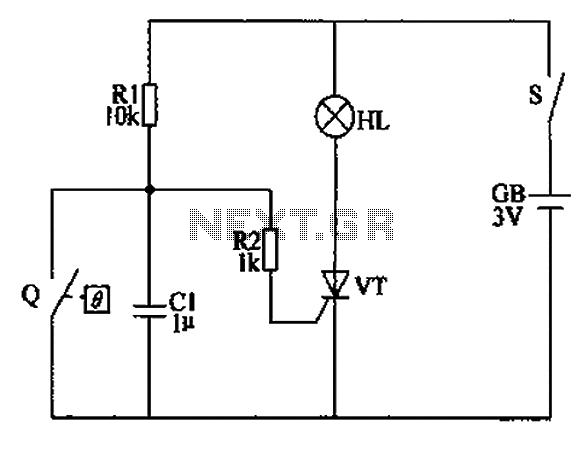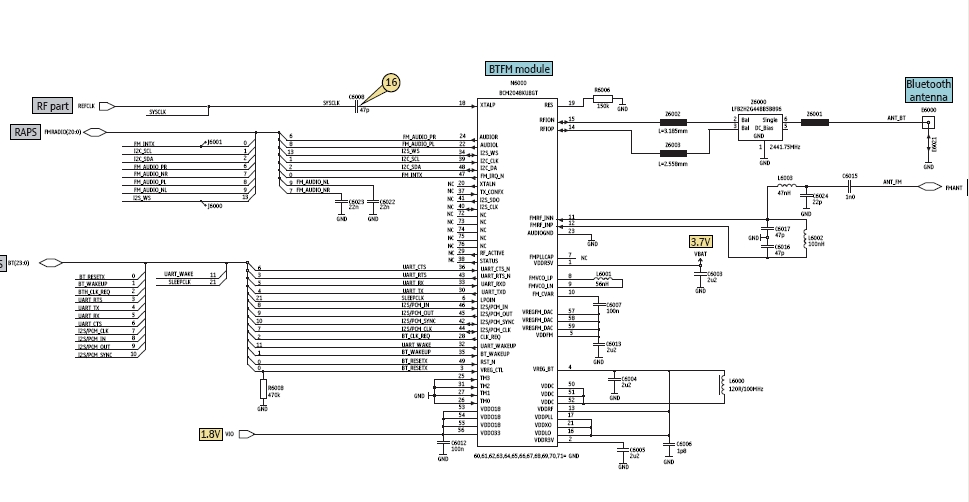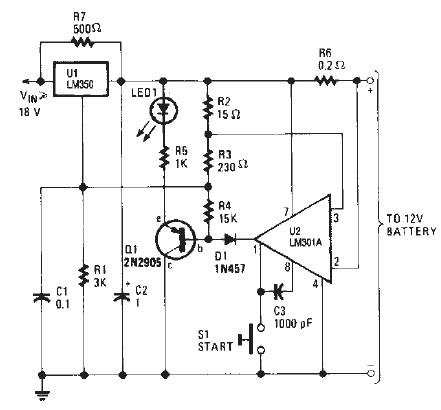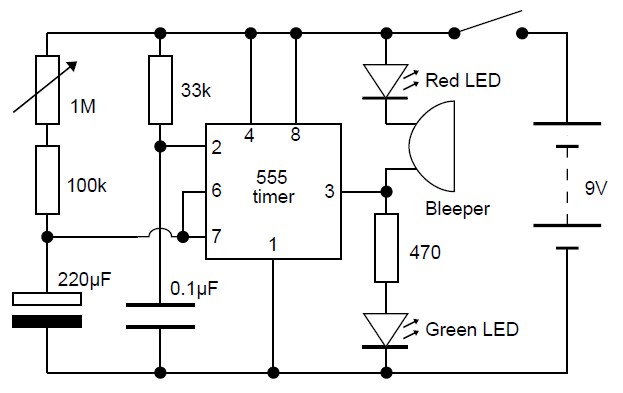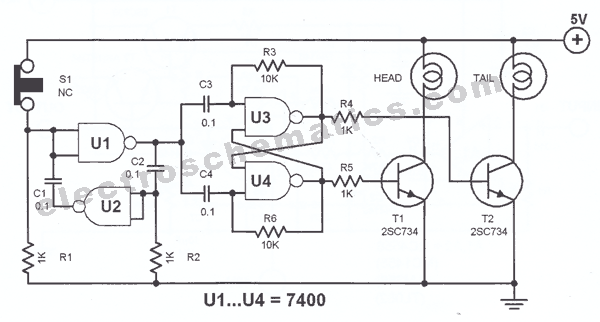
TV Transmitter circuit diagram (VHF)
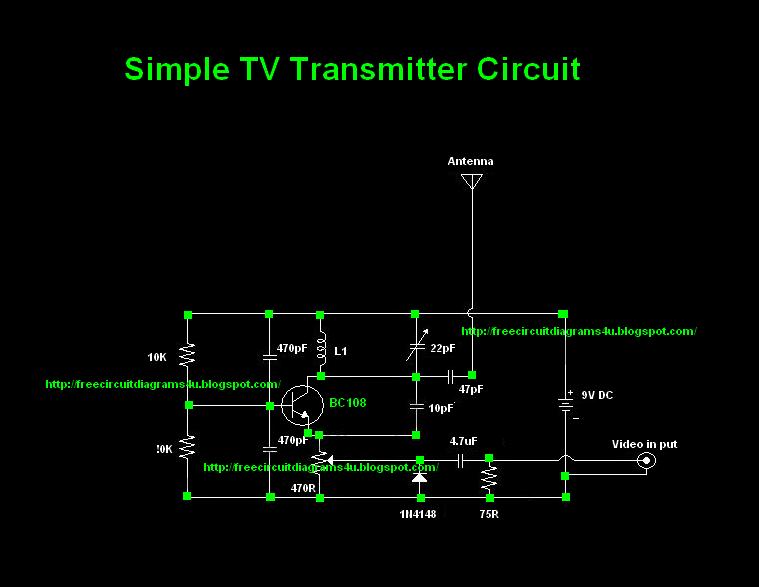
Many individuals inquire about TV transmitters. This document provides a useful circuit diagram that enables signal transmission over distances of 75 to 100 meters. The circuit diagram is not original; it was provided by a friend. Contributions of circuit diagrams from others are welcome for publication on the website. The circuit utilizes a common transistor, the BC 108. If this transistor is unavailable, equivalent transistors such as BC337, 2N2222, or BC546 can be used. For the inductor L1, wind 6 turns of #24 enameled wire on a 10mm air former for frequencies between 60 - 80 MHz. For frequencies between 150 - 180 MHz, wind 4 turns, and for frequencies between 180 - 200 MHz, wind 2 turns.
The TV transmitter circuit described is designed to operate effectively within a range of frequencies, allowing for versatile applications. The choice of the BC 108 transistor is significant due to its favorable characteristics for RF applications; however, alternatives like the BC337, 2N2222, and BC546 can also be employed without compromising performance. This flexibility in component selection aids in accessibility for builders who may not have the original transistor on hand.
The inductor L1 plays a crucial role in determining the operating frequency of the transmitter. The winding specifications are tailored to achieve specific frequency ranges: 6 turns for the lower band (60 - 80 MHz), 4 turns for the mid-band (150 - 180 MHz), and 2 turns for the upper band (180 - 200 MHz). The use of #24 enameled wire for winding ensures adequate inductance while maintaining a manageable size for the air former, which is essential for effective signal transmission.
The circuit's design emphasizes simplicity and functionality, making it suitable for hobbyists and those interested in exploring RF transmission. Proper assembly and tuning of the circuit will yield optimal performance, allowing users to transmit signals effectively over the stated distances. Additionally, the invitation for others to contribute their circuit designs fosters a collaborative environment, promoting knowledge sharing within the electronics community.Most of people ask TV transmitters. So Today I`m going to give you a very useful circuit diagram. By using this circuit you can send your signals 75m to 100m. This circuit diagram is not my own circuit one of my friends gave me this. I suppose you guys also can send your own circuit diagrams for us. Then we can publish them through our website. Here The y have used common transistor BC 108 If you are unable to find this transistor you can use equal transistors like Bc337 2n2222 Bc 546 # To make L1 wound 6 turns of #24 enameled wire on a 10mm air former for frequency 60 - 80 MHz For 150 - 180 MHz wound 4 turns and for 180 - 200MHz wound 2 turns. 🔗 External reference
The TV transmitter circuit described is designed to operate effectively within a range of frequencies, allowing for versatile applications. The choice of the BC 108 transistor is significant due to its favorable characteristics for RF applications; however, alternatives like the BC337, 2N2222, and BC546 can also be employed without compromising performance. This flexibility in component selection aids in accessibility for builders who may not have the original transistor on hand.
The inductor L1 plays a crucial role in determining the operating frequency of the transmitter. The winding specifications are tailored to achieve specific frequency ranges: 6 turns for the lower band (60 - 80 MHz), 4 turns for the mid-band (150 - 180 MHz), and 2 turns for the upper band (180 - 200 MHz). The use of #24 enameled wire for winding ensures adequate inductance while maintaining a manageable size for the air former, which is essential for effective signal transmission.
The circuit's design emphasizes simplicity and functionality, making it suitable for hobbyists and those interested in exploring RF transmission. Proper assembly and tuning of the circuit will yield optimal performance, allowing users to transmit signals effectively over the stated distances. Additionally, the invitation for others to contribute their circuit designs fosters a collaborative environment, promoting knowledge sharing within the electronics community.Most of people ask TV transmitters. So Today I`m going to give you a very useful circuit diagram. By using this circuit you can send your signals 75m to 100m. This circuit diagram is not my own circuit one of my friends gave me this. I suppose you guys also can send your own circuit diagrams for us. Then we can publish them through our website. Here The y have used common transistor BC 108 If you are unable to find this transistor you can use equal transistors like Bc337 2n2222 Bc 546 # To make L1 wound 6 turns of #24 enameled wire on a 10mm air former for frequency 60 - 80 MHz For 150 - 180 MHz wound 4 turns and for 180 - 200MHz wound 2 turns. 🔗 External reference
